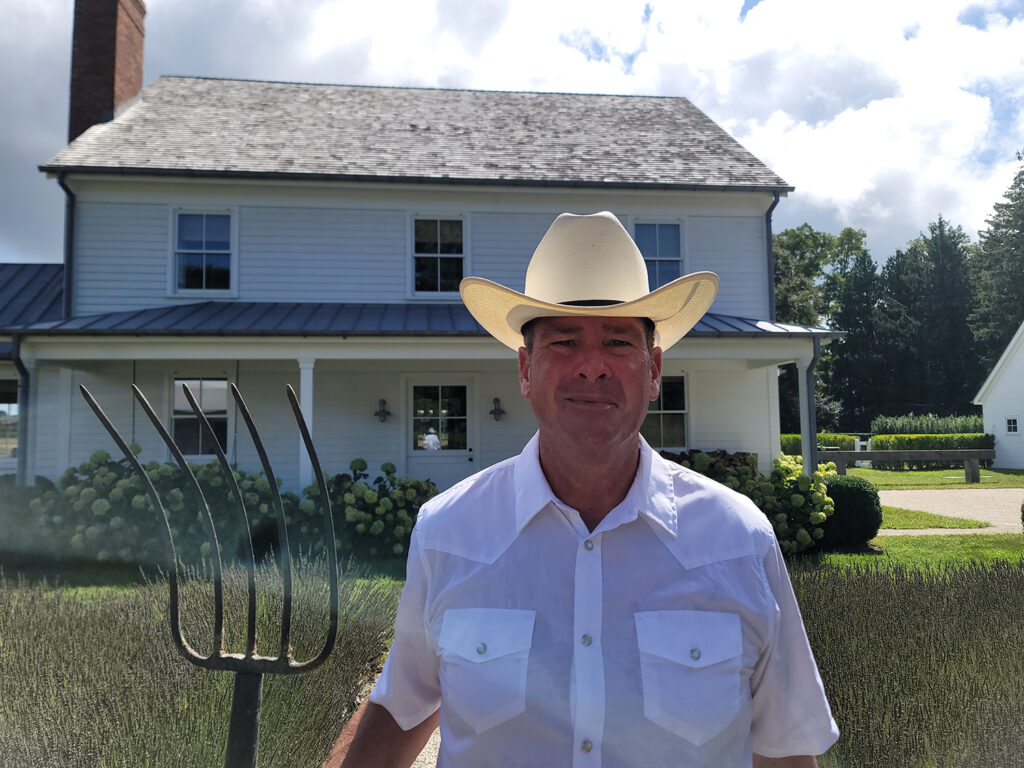Column: South by Northwest

I thought maybe since winter was being so stubborn I would embrace it by hiking a hilly trail deep into an eastern white pine forest.
These trees have a softness and grace about them that is warming to the soul and quells the winter doldrums. A venture such as this takes some planning, of course, because native stands of eastern pine are rare on Long Island, although the trees flourish all around us. Their proclivity for growing straight and tall makes them a targeted species of timber companies from the Virginias to eastern Canada. It is the state tree of Maine, outshining all of its competition in one of the most forested states in the nation.
Knowing all this I was left with the disconcerting knowledge that my quest would involve a long ferry ride and drive just to walk a few miles in a pine forest. I coerced my wife into joining me with the promise of lunch at one of those en vogue seaside New England towns. We packed our gear, hopped in the car and made our way to the ferry for the long trip ahead. Interestingly, the ride seemed to take just five minutes, and the drive only another ten. And instead of north, my car compass indicated we were heading south. On the way to the trail we did indeed pass through a quaint though bustling seaside town replete with storefront eateries. We reached the trailhead in record time, jumped out and began our hike.
East Hampton’s Northwest woods could just as easily be set in the hills of Maine. Much of its 5,000 acres is preserved and undeveloped. Plots that do have dwellings near the trails are generally large but intermittent. The trailhead is on East Hampton/Sag Harbor Turnpike (Route 114), a few minutes outside of Sag Harbor. A small dirt parking area and an information placard with a trail map underscore the simplicity of the trail system — you just take the trail in until you decide to turn around. The trails are narrow and maintenance amounts to pushing windfall to the side. Hikers share a portion of the trails with bikers, though areas like Wilson’s Grove, which is a half hour walk from the trail head, are off-limits to the off-road pedalers.
On first entering the trail, one has the impression the eastern pines are mere underbrush to the raspy-barked, unkempt pitch pines that tower over them. Muted oak trees also compete with the saplings for the strands of sunlight penetrating the conifer canopy. In the area we walked, there was almost no underbrush to speak of, allowing the forest floor to display its diverse array of mosses and ferns. Deadwood in varying states of decay spawns a range of fungi that could captivate me for hours.
On our walk, I noticed right away the insulating quality of the pine needles, both as part of the living trees and as leaf litter. The sounds of cars travelling Route 114 were muffled immediately upon entering the woods. A biting west wind was reduced to a soothing whoosh as it passed through the highest tree tops, never making its way to us on the path. Even the occasional plane using the airport across the road sounded very far off, more a vibe than a noise.
In the crotches and crannies of deadwood we found remnants of snowfall from a week ago, the crystals surviving in shadows and the cool microclimate of the loam and litter. Though the wind could not reach us, the refrigerative property of pine forest permeated our clothing every time we paused. Ever notice places in the pine barrens, such as Westhampton, are five to ten degrees cooler on the morning weather maps? This is due to radiational cooling during which the ground in these areas lose its heat from daytime warming more quickly than other soil compositions.
The terrain in this section of northwest starts off fairly level. I noticed a gradual climb in elevation about half a mile in before we were faced with steeper hills and switchbacks. We reached the highest point of the trail a mile in and were rewarded with a view of Northwest Harbor and Shelter Island’s Mashomack Point to the north. This vantage point and the view it offered was an unexpected treat and highlight of the hike. The descent led us to the other highlight, Wilson’s Grove.
According to my research, the eastern white pine forest in Northwest Woods is one of only a few indigenous stands of this species on Long Island. It is in Wilson’s Grove we found the white pines dominate the pitch pines, their smooth silvery trunks running straight and true past the gnarled, wavy shafts of their stunted cousins. The grove is in a hollow and is quiet and alien. While just the top quarter of the pitch pines hold branches and needles, the eastern pines are accessorized from bottom to top, making noon of a sunny day feel like dusk.
Like many of these refuges of nature in our area, the preservation of Wilson’s Grove was made possible by a landowner and an open space organization. Marilyn Wilson worked with Peconic Land Trust to keep this part of the woods forever green.
The grove is just one of several stopping points on the trails of Northwest Woods. When the weather is more inviting, I plan to visit Cedar Point County Park at the extreme northern tip of the trail. For now, I’m content with the 90-minute hike we had in the quiet solitude of East Hampton’s own little slice of Maine.








